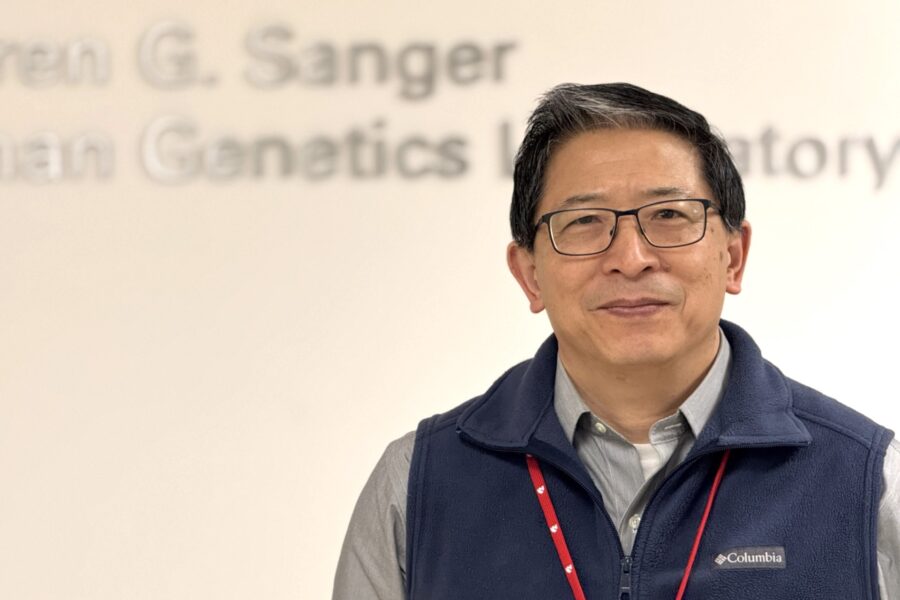Coming to Nebraska in 2023 to head the Warren G. Sanger Human Genetics Laboratory (HGL) at the University of Nebraska Medical Center was an easy decision for Dr. Zhenya Tang.
“The excellence of this lab was already established,” he said, noting it was among the first laboratories to develop FISH tests for diagnosis. In addition, “this lab is one of a few labs nationwide that started the microarray for diagnostics.”
Dr. Tang is focused on bringing the laboratory into the future, to keep it on the cutting edge. “We are trying to move on,” he said. “The field has advanced as well. We are trying to increase automation and develop new assays.”
Since his arrival, Dr. Tang has moved to increase automation in the lab. He has also bolstered its expertise, bringing Changqing Xia, MD, PhD, aboard in 2024. The changes will enhance the already strong national reputation of the Human Genetics Laboratory, which was established on campus in 1974.
“We started with one test, the chromosome test. Over the last 50 some years, we have developed many technologies along the way,” said Diane Pickering, MS, manager of the lab. “With the development of Fluorescence In-Situ Hybridization (FISH), we started with five probes. Now we have well over 350 FISH tests in our test menu. Microarray came around the early 2000s.” She said the laboratory processes about 9,000 tests a year, including oncology and prenatal/postnatal disorders, “a comprehensive test menu for genetic testing.”
Artificial intelligence-aided analysis will dramatically shorten turn-around time, Dr. Tang said. They also are working to greatly increase the sensitivity of their testing to detect ever smaller structural changes in DNA. “Microarrays allow us to see very small lesions that cannot be detected by the naked eye, even under the microscope,” he said. “More and more therapeutic targets are being identified that we can develop a FISH test for,” Pickering said.
Their work goes beyond aiding diagnosis and in helping to find targeted therapeutic treatments, Dr. Tang said. Such targeted therapy is preferred over chemotherapy, which comes with more side effects and a heavier toll on the patient.
“Under Dr. Tang’s direction, we are developing FISH tests for specific gene regions that are implicated in cancer. These results provide valuable information to pathologists, health care providers, and patients,” Pickering said. “Automation is key to continuing to develop new tests and to provide rapid results for excellent patient care.”
When the automation is in place, lab specimens will be scanned by a machine, which will produce digital images for technologists to study from computer screens. Currently, their laboratory staff examine FISH signals under the microscope in a dark room. “Most of the procedures are still done manually,” Dr. Tang said. “This will be much faster, and we can process a much higher volume simultaneously. Right now we can run five to 10 FISH tests a day manually. With automation, we can run up to 25 tests a day.”
He said the goal is to have the new automated system installed and validated in the lab this year. The technology will free up the staff of 25 to spend less time on mundane physical tasks and more time applying their expertise.
The job requires very unique experience and skills, Dr. Tang said. “Some samples are very complicated. Out of those we need to identify what’s wrong, what’s the abnormality, how many, which one is targetable. That is what the clinicians want to know.”
Dr. Tang praised his staff’s expertise and dedication to improving patients’ health outcomes. “We are a team and we work very well,” he said.
Pickering said: “We are honored to have Dr. Zhenya Tang, who is the inaugural Dr. Bhavana J. Dave Distinguished Professor in Human Genetics, and more recently, Dr. Changqing Xia, as our directors. With their experience and strategic plan for the lab, I am excited for the future of HGL!”
